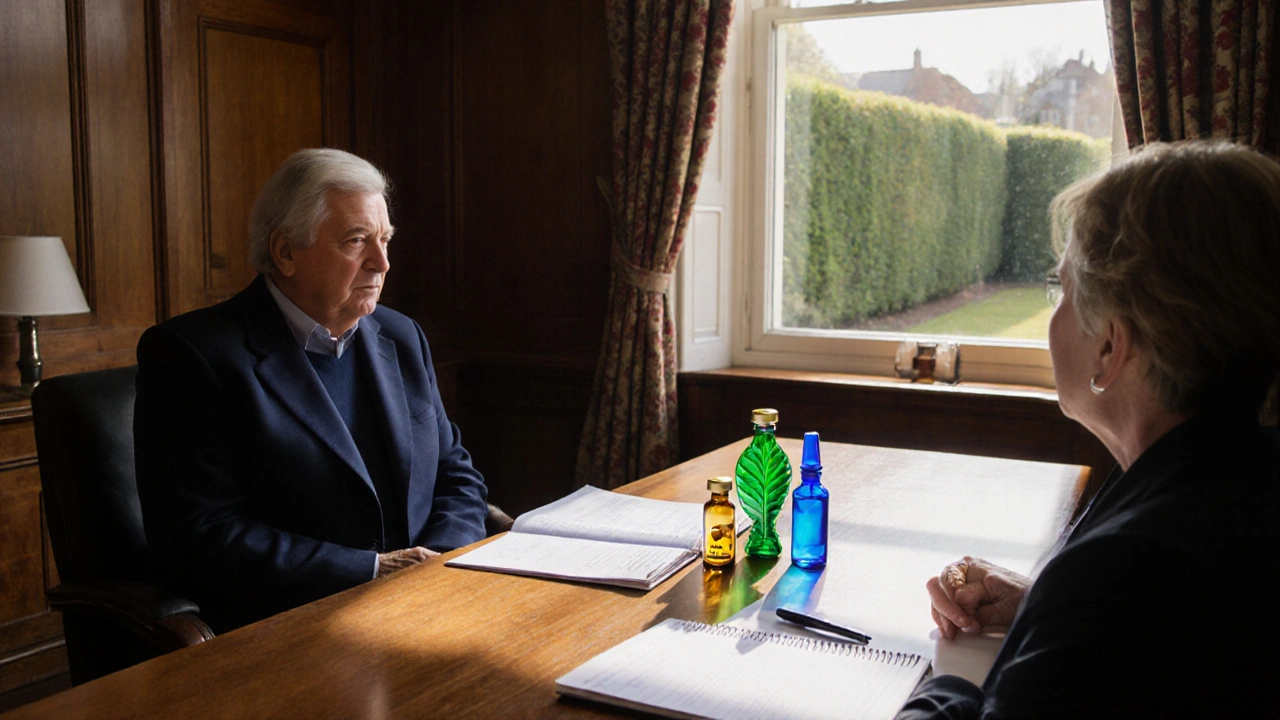Ursodiol: What It Is and Why You Might Need It
If your doctor mentioned Ursodiol, you probably wonder what it does and if it’s right for you. Ursodiol is a naturally occurring bile acid that helps dissolve certain gallstones and improves liver function when bile flow is impaired. It’s most often prescribed for primary biliary cholangitis (PBC), gallstone dissolution, and to prevent bile-related complications after gallbladder removal. Because it works by changing the composition of bile, it can reduce the risk of stone formation and ease liver inflammation.
How to Take Ursodiol Correctly
Getting the dose right matters. Adults usually start with 13–15 mg per kilogram of body weight, taken in two or three divided doses with food. For gallstone treatment, doctors often aim for a 6‑month course, but the exact length depends on how quickly the stones shrink. If you have PBC, you may stay on the medication long‑term, with regular blood tests to monitor liver enzymes. Always swallow the tablets whole; crushing or chewing can irritate your stomach.
Common Side Effects and When to Seek Help
Most people tolerate Ursodiol well, but a few experience mild nausea, diarrhea, or abdominal cramps. These symptoms usually fade after a few weeks. Severe reactions—like itching, rash, or yellowing of the skin—are rare but require immediate medical attention. If you notice any sudden changes in urine color, persistent dark stools, or worsening fatigue, call your doctor. Staying hydrated and eating a balanced diet can help minimize gut upset.Another practical tip: keep a medication list handy and tell any new specialists you see that you’re on Ursodiol. This prevents drug interactions, especially with cholesterol‑lowering agents or certain antibiotics. Your pharmacist can also double‑check for any hidden interactions.
For most patients, Ursodiol offers a non‑surgical way to manage gallstones and support liver health. It’s not a magic pill, though—lifestyle changes like maintaining a healthy weight, limiting high‑fat meals, and staying active boost its effectiveness. Pairing the drug with a diet rich in fruits, vegetables, and whole grains can further improve bile flow.
When you pick up your prescription, ask the pharmacist about storage. Ursodiol tablets should be kept at room temperature, away from moisture and direct sunlight. If a dose is missed, take it as soon as you remember unless it’s almost time for the next dose; then just skip the missed one. Never double up to make up for a forgotten tablet.
In summary, Ursodiol is a bile‑acid medication that helps dissolve gallstones, treats certain liver diseases, and can prevent post‑surgical complications. Proper dosing, food‑timed intake, and monitoring for side effects are key to getting the most out of the treatment. Talk to your healthcare provider about any concerns, and follow up regularly to track your progress. With the right approach, Ursodiol can be a straightforward part of managing your biliary health.
Actigall (Ursodiol) vs. Alternatives: A Practical Comparison
A detailed side‑by‑side comparison of Actigall (Ursodiol) with chenodiol, obeticholic acid, surgery and watchful waiting, covering effectiveness, side effects, costs and how to pick the right option.
